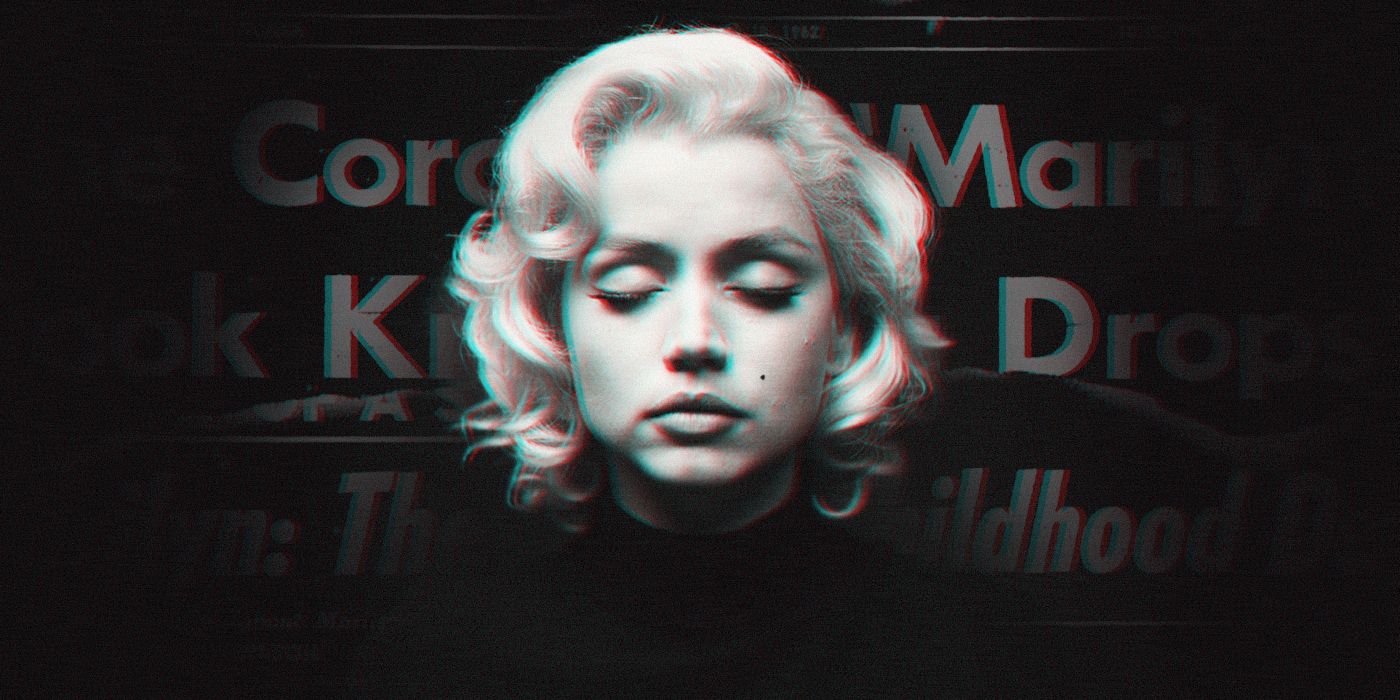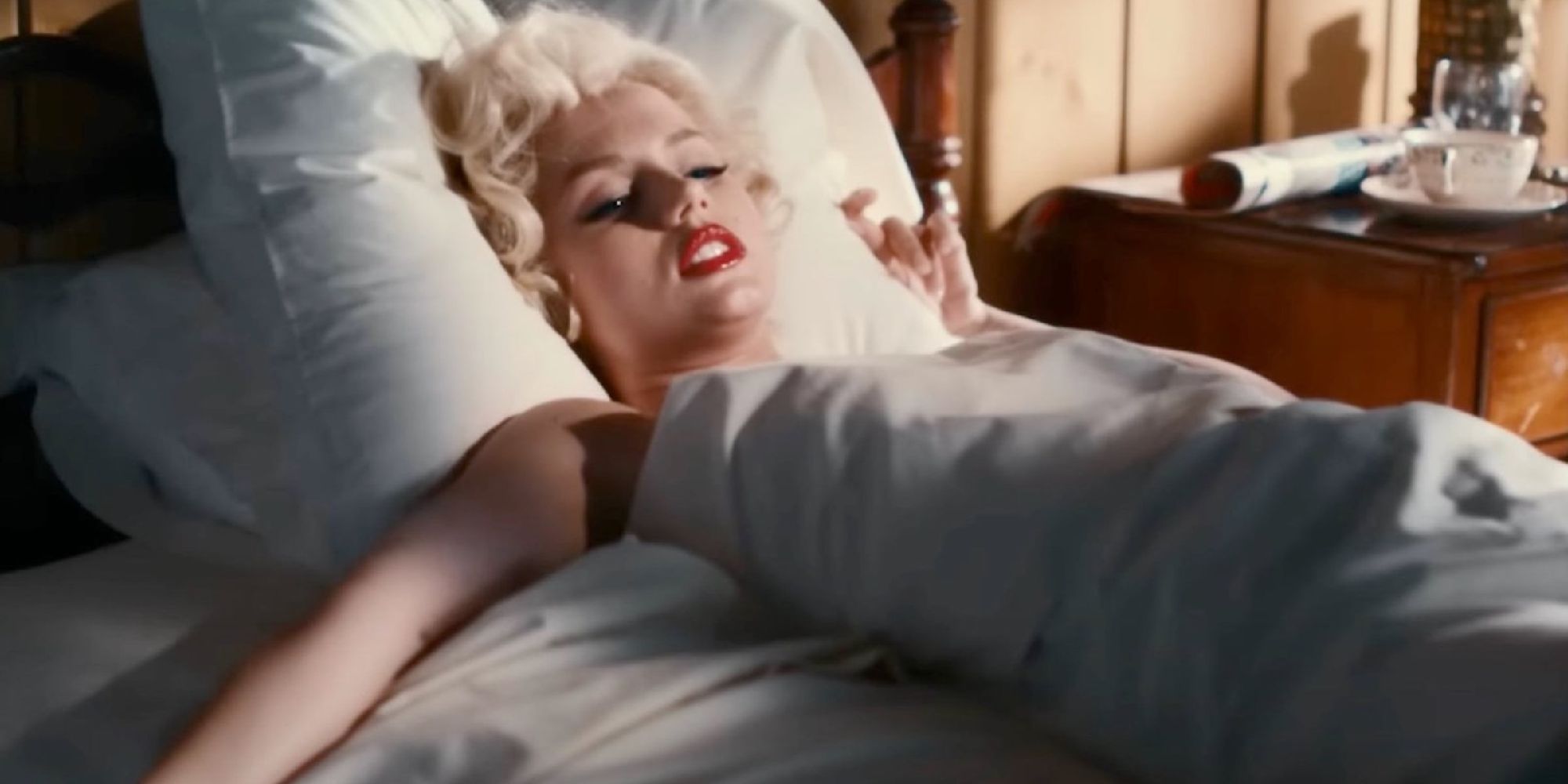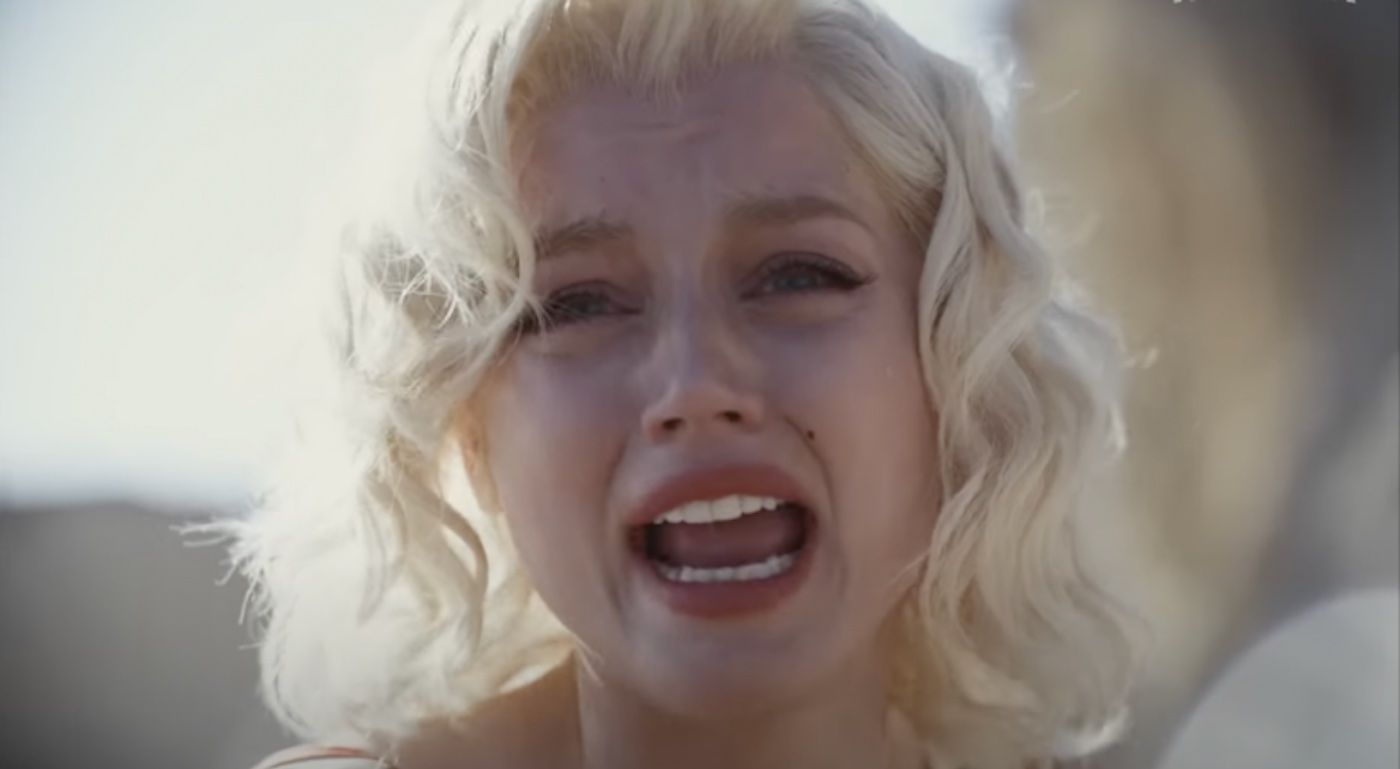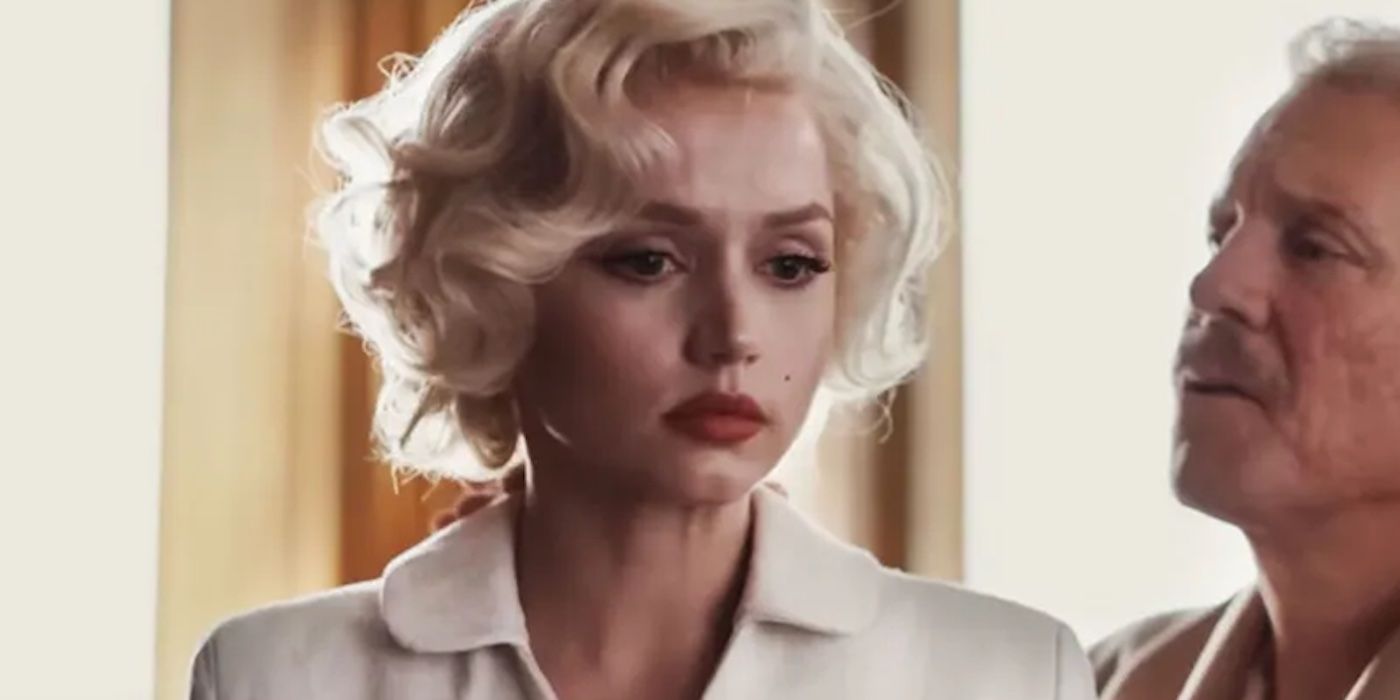Editor's Note: The following contains spoilers for the Netflix movie Blonde.
Netflix's long-awaited Blonde has taken the world by storm, but for all the wrong reasons. Directed by Andrew Dominik and based on Joyce Carol Oates's novel of the same name, the highly fictionalized Marilyn Monroe biopic starring Ana de Armas has been largely deemed by critics as a cruel exploitation that humiliates and reduces the iconic star to a helpless victim. Blonde portrays the life of Marilyn Monroe — the world's most famous woman to be sexualized and abused under the male gaze — and spends nearly three excruciating hours objectifying her under the male gaze once again. It is painfully clear that Blonde is a film made with absolutely no understanding or sensitivity to the female experience.
An Appalling Stance on Abortion
It shouldn't be surprising, then, that Blonde gets absolutely everything wrong about abortion. In response to the film's portrayal of Monroe's pregnancies and two subsequent abortions (both forced against her will), Planned Parenthood recently released a statement to The Hollywood Reporter criticizing Blonde for its use of anti-choice propaganda:
"While abortion is safe, essential health care, anti-abortion zealots have long contributed to abortion stigma by using medically inaccurate descriptions of fetuses and pregnancy. Andrew Dominik’s new film, Blonde, bolsters their message with a CGI-talking fetus, depicted to look like a fully formed baby."
Caren Spruch, national director of arts and entertainment engagement at the Planned Parenthood Federation of America, told The Hollywood Reporter,
"Planned Parenthood respects artistic license and freedom. However, false images only serve to reinforce misinformation and perpetuate stigma around sexual and reproductive health care. Every pregnancy outcome—especially abortion—should be portrayed sensitively, authentically and accurately in the media. We still have much work to do to ensure that everyone who has an abortion can see themselves onscreen. It is a shame that the creators of Blonde chose to contribute to anti-abortion propaganda and stigmatize people’s health care decisions instead."
It is a longstanding practice in anti-choice rhetoric to use pictures of fully formed fetuses, promoting a medically inaccurate depiction of fetuses as a form of emotional manipulation. In Blonde, there are multiple scenes where the fetus of Marilyn's unborn baby is shown — early on in the pregnancy — as fully formed, first when she becomes pregnant after a threesome with Charlie Chaplin Jr. (Xavier Samuel) and Eddie G. Robinson Jr. (Evan Williams), then later when she is pregnant with her third husband, Arthur Miller (Adrien Brody) (though he is unnamed in the film), and finally, after she is raped by the president (Caspar Phillipson) (again unnamed, but very clearly JFK).
During her first pregnancy, Marilyn, who is being pressured to get an abortion due to her role in Gentlemen Prefer Blondes, has a conversation with her mother that is off-putting, to say the least. She tells her mother how brave she was to keep her when she didn't have a man around to help her, saying, "Another girl would've… well, you know, gotten rid of it… of me. And I wouldn't be here at all. But you were brave. You did the right thing. You had your baby. You had me."
While Marilyn is talking, we see flashbacks to her mother's abuse during her childhood, which suggests that perhaps the film wants us to question whether her mother's decision to keep her truly was "brave," or the "right thing," as Marilyn says. However, coupled with the strongly anti-choice propaganda throughout the film (specifically the talking fetus), Marilyn's conversation with her mother gives us an unpleasant introductory taste to the film's use of anti-choice clichés, such as the binary division of having a child being deemed "the right thing," or the "brave" thing, implying, of course, that abortion is the evil or cowardly choice.
Turning Abortion Into a Horror Movie
This agenda is further reinforced by the way the film portrays abortion with sensationalized violence and gore. When Marilyn bangs on the driver's window and says she's changed her mind about the abortion, then begs the doctors to "please listen, I've changed my mind," nobody listens. It's as if she is not even present. It is a stark scene as Monroe lies on the operating table, and we see the doctor performing the procedure through the vantage point of Monroe's cervix. She hallucinates that she jumps off the table and runs through her childhood home, which is engulfed in flames. There is an infant crying inside a drawer — a horrific portrait that suggests that Marilyn's baby is, quite literally, burning. The terrifying scene, from the moment Monroe gets into the car and starts to beg her driver to turn around, reinforces the anti-choice message that abortion is a cruel, violent procedure. The scene relies on a dangerous, factually incorrect trope meant to scare and shame pregnant women by perpetuating misinformation about reproductive healthcare and painting abortion providers as monstrous, inhumane doctors who will strap a patient down without her consent.
We see this again later in the film's conclusion when Monroe is pregnant after the horrific JFK scene. The film suggests that the president's team kidnaps her in the middle of the night and forces her to have an abortion. This second procedure is, somehow, even more nightmarish than the first. Marilyn, convinced it's a terrible dream, lets out an unnerving laugh, as a bunch of stone-faced men watches her on the operating table. When she wakes up in her own bed later, her abdomen, as well as the white sheets underneath her, are drenched in blood. Of course, it does not take an expert in reproductive health to realize that there would never be this much blood — this is clearly yet another shameful, disgusting attempt to shock audiences under the guise of "artistic freedom."
This brings us finally to the already infamous conversation Monroe has with her unborn baby during her pregnancy with Miller. Despite the fact that Marilyn's stomach is mostly completely flat, suggesting she is quite early on in her pregnancy and therefore, would absolutely not have a fully formed fetus inside her, a computer-generated image of the fetus is shown yet again, just like with her first pregnancy. The fetus begs her, "You won't hurt me this time, will you? Not do what you did last time?" Marilyn responds, "You're not the same baby. You're this baby." The fetus responds, bizarrely, "That was me. It was always me."
An Exploitation of Female Suffering
Of course, aside from the fact that this makes utterly no sense, the conversation reinforces shame upon Marilyn, and in turn, perpetuates the stigmatization that abortion is a shameful procedure. The film yet again pushes Monroe to the background and exploits her as less of a person, and more of a phenomenon to be acted upon —even by her own unborn child. The scene leaves you with a particularly bad taste in your mouth and a feeling of gnawing discomfort in your gut, especially after we see Marilyn lose the baby after tripping on the beach, implying yet again, Marilyn is to blame for the loss of her child.
One of the major issues with Blonde that has been profusely and adamantly argued by critics is that it exploits female suffering under the lens of an outrageously bold male gaze. The scenes where Marilyn is seen talking to her unborn fetus, or lying on the operation table not once but twice as she undergoes two forced abortions, are further evidence that Blonde is written from a male perspective with a troubling lack of knowledge of the female experience. When asked about the film's anti-choice agenda, the film's writer and director Andrew Dominik dismissed the notion that the scene was anti-abortion. He said in a statement to The Wrap, "It’s just people looking at the film through the lens of their own particular prejudices or whatever agenda that they want to advance. I don’t think it has anything to say about Roe v. Wade." He added, "I mean, no one would have given a shit about that if I’d made the movie in 2008, and probably no one’s going to care about it in four years’ time. And the movie won’t have changed. It’s just what's sort of going on."
One might argue that dismissing the overturning of Roe v. Wade as an "agenda" or "what's sort of going on" is an example of why, perhaps, Blonde suffers from a painful lack of awareness or acknowledgment of the female perspective. The one thing the world does not need any more of is another film that exploits and sensationalizes the traumatic events of Marilyn Monroe's life. No matter which way you spin it, Blonde projects a loud, anti-choice narrative under the guise of "art." There is a fine line between artistic freedom and exploitation, and it's about time we called it what it is.




